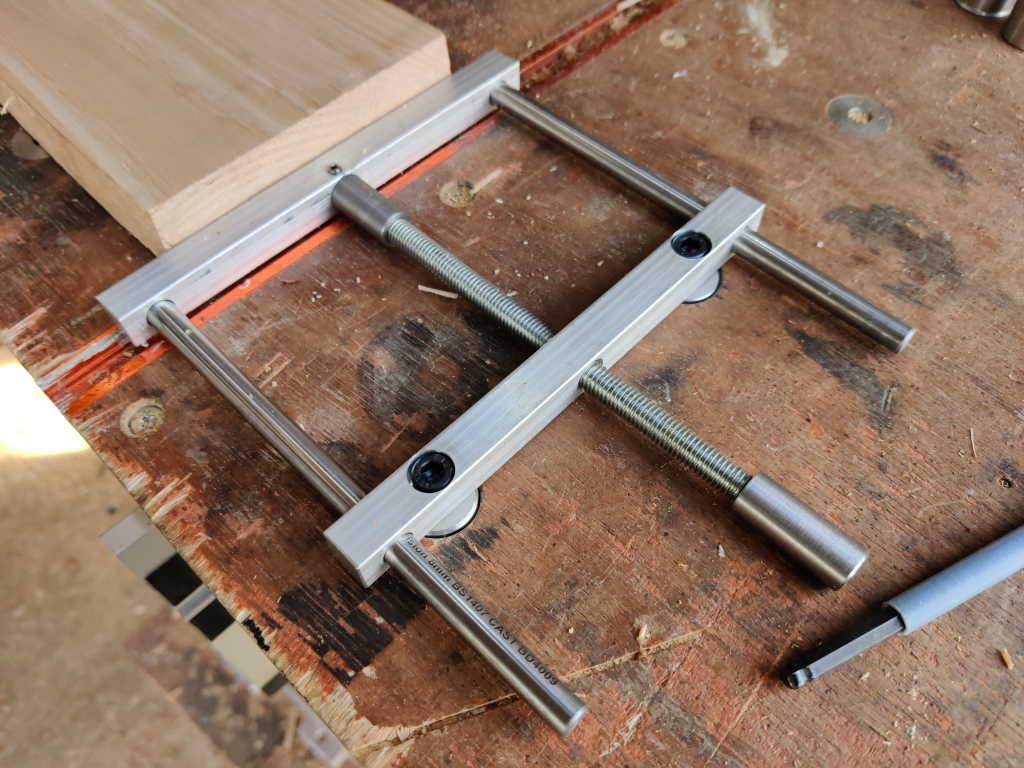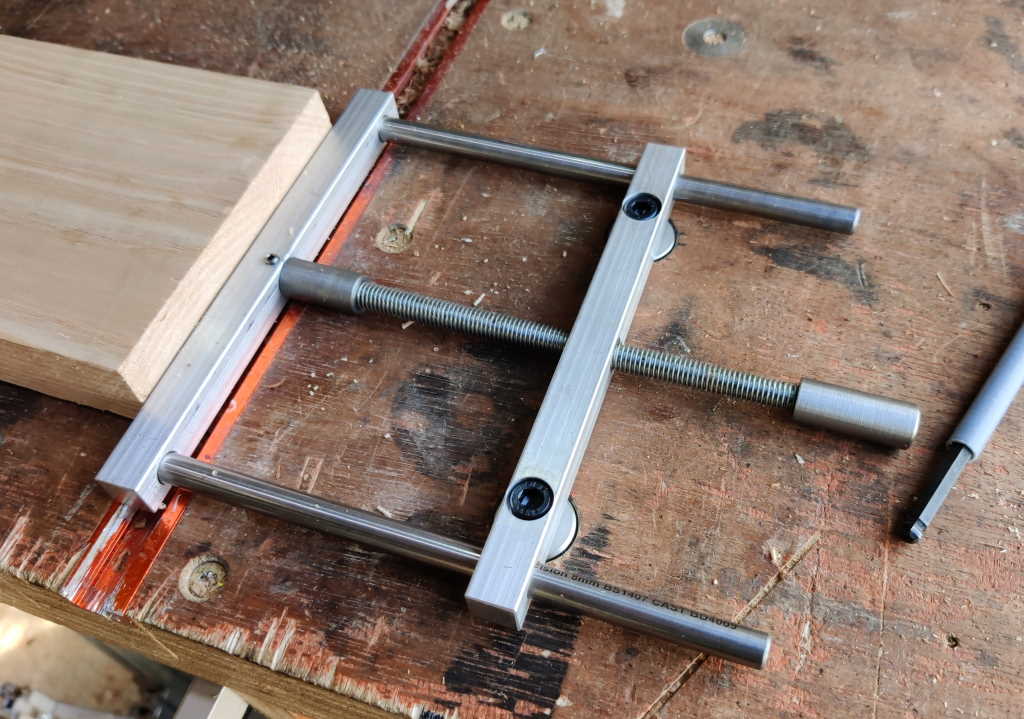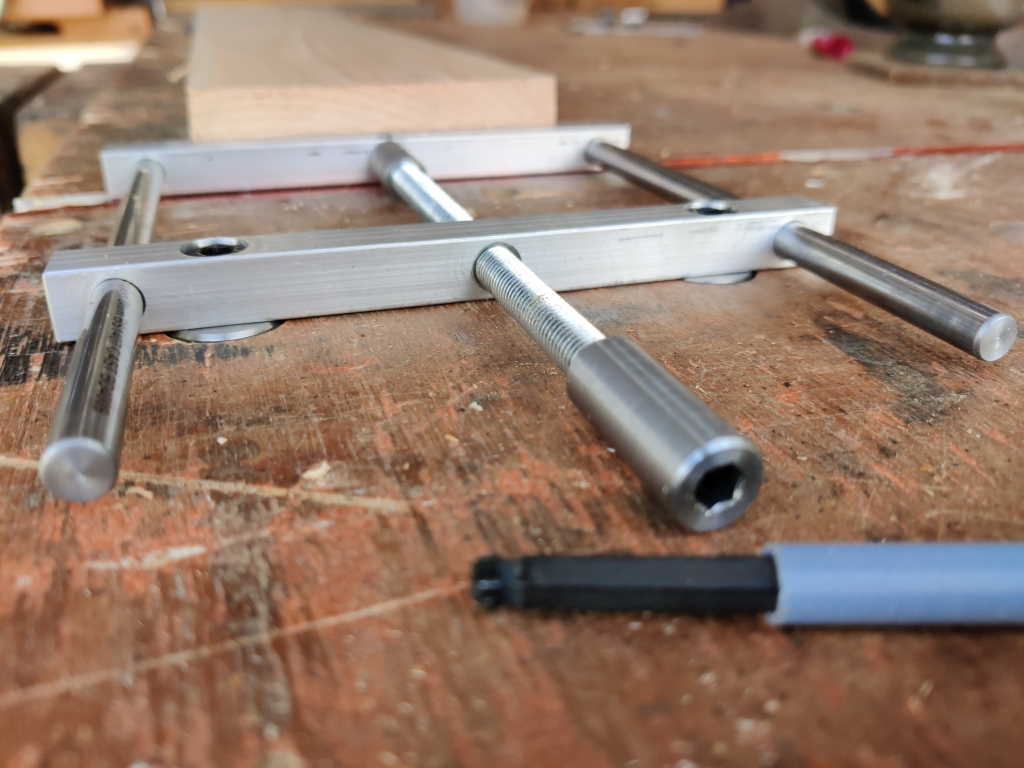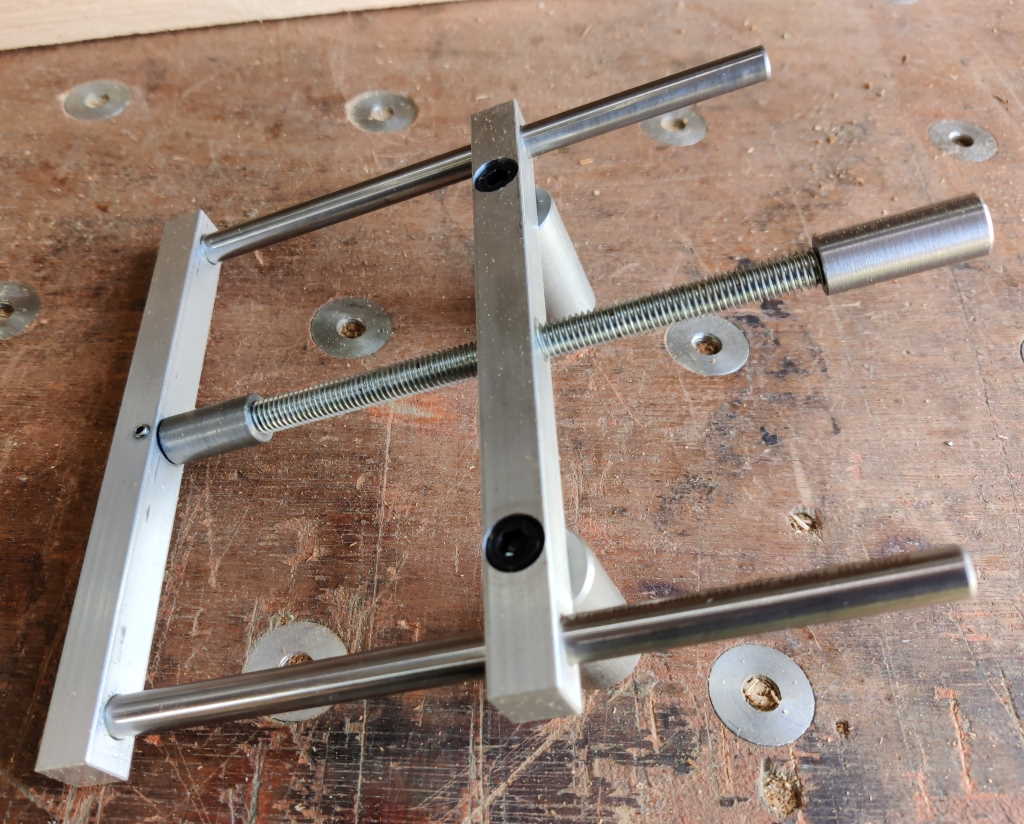Dog Hole Tail Vice
This is my dog hole tail vice, used for clamping stock on the bench while planing the top surface. In the past I've mostly used a "doe's foot" clamping system for this type of planing, but it gets difficult for longer pieces (where there's no space to clamp the doe's foot in place) and it also doesn't hold the wood as firmly as a vice.
My bench goes right up to the garage door, so there isn't space for a conventional tail vice. This version also has the advantage of being a lot cheaper than a commercial tail vice and a lot easier to fit.
Opening and closing the tail vice is done with an M6 t-handle hex key. When the weather is good enough for the garage door to be open, the t-handle hex key hangs over the end of the bench and it's very fast to spin the vice in and out. When the weather is less pleasant, I use a ball-ended conventional hex key; the ball-end allows the key to be lifted up and spun fairly quickly.
These photos show the construction of the vice. The square bars are 12 mm square aluminium. The M6 threaded rod runs in a threaded hole in the fixed bar (it's actually a steel threaded insert from a thread repair kit to give a bit more strength and wear resistance). The outer bars are 8 mm silver steel. The components at either end of the threaded rod are both EN1A - they are drilled and tapped and then the thread is glued in place with Loctite 603. One piece has a 5 mm AF hex hole broached in it with a rotary broach; the other end has a reduced section and a groove in which a small grub screw runs: this causes the moving jaw to be pulled back when the vice screw is turned anticlockwise.
Underneath the vice are two short pieces of 20 mm diameter stainless steel (303). My original plan had been to adjust the position of these dogs to align perfectly with the 96 mm pitch holes in the bench. That worked fine, but it took a fair bit of force to pull the dogs out of the holes. However, I've found that if the M6 cap screws are loosened before dropping it into the dog holes and then the cap screws are tightened, the movement from tightening the cap screws presses the dogs against the side of the holes and the vice becomes rigidly attached to the bench. Loosening one or both cap screws is enough to make it easy to remove.
This website is free and ad-free, but costs me money to run. If you'd like to support this site, please consider making a small donation or sending me a message to let me know what you liked or found useful.






